

One of the most important responsibilities that teachers have is planning lessons that are interactive and engaging for their diverse learners. Learning in a traditional school setting can be daunting and even stressful especially for students who struggle with language proficiency, ADHD, dyslexia, learning disabilities, as well as students who are gifted and need to be challenged with academic rigor (Nguyen, 2021). According to Schrum & Sumerfield (2018), lecturing all day from behind a podium demotivates learners and is no longer a feasible option for student engagement.
In classrooms across the nation, game-based learning tools are being integrated into daily lessons, which allows teachers to move about the classroom to facilitate and guide student learning more readily (Nguyen, 2021; Schrum & Sumerfield, 2018). In addition, digital learning platforms boast more student centric engagement, and they provide student-led experiences that help to build independence (Alkhaldi, 2020). Thanks to digital and game-based learning, students have more accessible learning opportunities that can be targeted, personalized, and computer adaptive (Schrum & Sumerfield, 2018).
Benefits and Challenges of Game-based Learning
In 2020, during the COVID-19 pandemic, teachers across the nation were faced with finding a new way to instruct children (Alkhaldi, 2020). This challenged more teachers and school systems to shift to remote learning and digital platforms to educate students. I remember how stressful and overwhelming it was to keep up with the various digital learning tools, especially since my digital efficacy was in the developmental stage.
We had to 1) sort through a huge array of digital instructional tools for all content areas while determining validity and reliability, 2) navigate remote learning platforms and use breakout rooms for small groups, while assessing student progress, and 3) we even had to learn and use a new learning management system (LMS) called Canva, which allowed us to plan instruction, teach lessons, and collect student assignments. The learning curve for teachers and students was vast, immediate, and highly stressful.
Currently, the post-COVID-19 instructional landscape has shifted a bit in some districts from the traditional lecture-led setting. More teachers maximize opportunities for students to utilize digital platforms and tools that include game-based learning and gamification to enhance learning outcomes for students (Alkhaldi, 2020).
Game-based learning is designed to offer interactive digital classroom learning tools that align with curriculum content in a non-game setting; gamification is the use of web-based learning and apps that provides external rewards such as points, leaderboards, and badges (Nguyen, 2021; Schrum & Sumerfield, 2018; Waterford.com, 2019). Both game-based learning and gamification are tools that offer several advantages for learners.
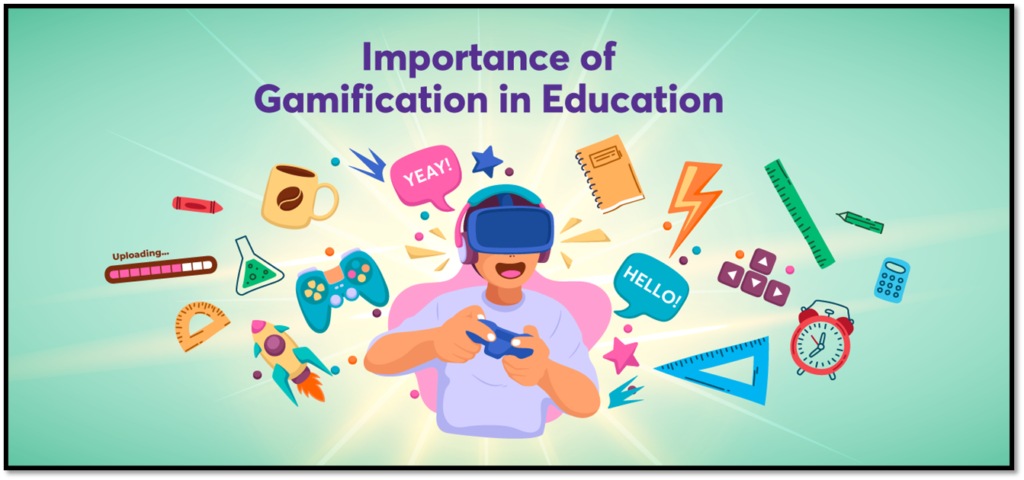

According to an article published by Waterford.org (2019) gamification increases active engagement, improves retention skills, reduces stress, and motivates students to participate in learning more frequently. When using game-based learning and digital learning platforms, research shows that learning becomes more accessible, more equitable, and more engaging for students (Nguyen, 2021). In addition, game-based learning improves social-emotional skills and increases collaborative learning and teamwork (Nguyen, 2021; Schrum & Sumerfield, 2018; Waterford.org, 2019).
Game-based learning along with gamification provides multisensory learning opportunities such as visual, audio, and kinesthetic learning for students. Other benefits of game-based learning and gamification are the positive impacts on students with ADHD and dyslexia. Studies show that when playing virtual games, students with ADHD are more focused, and students with dyslexia demonstrate improvement with spatial and visual processing (Nguyen, 2021).
When game-based learning aligns with and reinforces learning objectives, while tracking learning outcomes, and provides student data it is a win-win situation for students and teachers (Nguyen, 2021). Because the games are immersive and can be used to target students’ needs, students are more compelled to make academic gains. Game-based learning activities motivate students to take risks and try challenging skill levels more frequently because students can get immediate feedback of their choices in a low-risk setting, and in many instances, they can try repeatedly to reach the next skill level (Nguyen, 2021; Waterford.org, 2019).
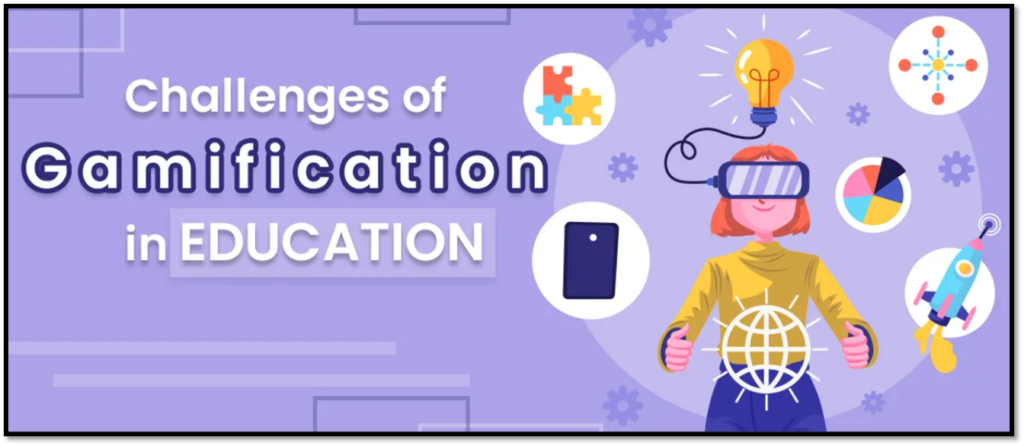

A disadvantage of game-based learning is when teachers only use it for state mandated content and standards assessments (Schrum & Sumerfield, 2018). Because students are often over tested and undertaught in a race to meet curriculum pacing deadlines, game-based learning becomes another compliance-based check-the-box assessment tool, rather than a fun learning tool to engage and motivate students. According to Schrum & Sumerfield, (2018), teachers who use game-based learning without planning, setting goals, and monitoring student progress are likely to witness counterproductive results for their learners. “There is no one-size-fits-all design or template that suits all eLearning concepts (Huseman, 2022).” Therefore, it is important for teachers to align game-based learning and integrate it with curriculum objectives.
Though the use of game-based learning tools can prove beneficial, not all students have access to technology and consistent internet connectivity at school and at home; this issue can create problems for teachers and learners (Alkhaldi, 2020). Another disadvantage is that teachers may not receive training for game-based learning platforms. In many instances, teachers do not have extra time to train themselves and do research to find tech games and apps to match the diverse needs of their students (Schrum, & Sumerfield, 2018).
Let the Games Begin
This section of the article will provide a brief review of digital learning platforms that are available for teachers to integrate and align with elementary school curriculum demands. I have curated some web-based digital learning tools for educators to determine if they are immersive, engaging, interactive, and student centric. As you read about each, determine if the various game-based learning tools are efficient for your classroom setting, and if they offer enough bells and whistles to have the impact that you need for your diverse learners.
Gimkit
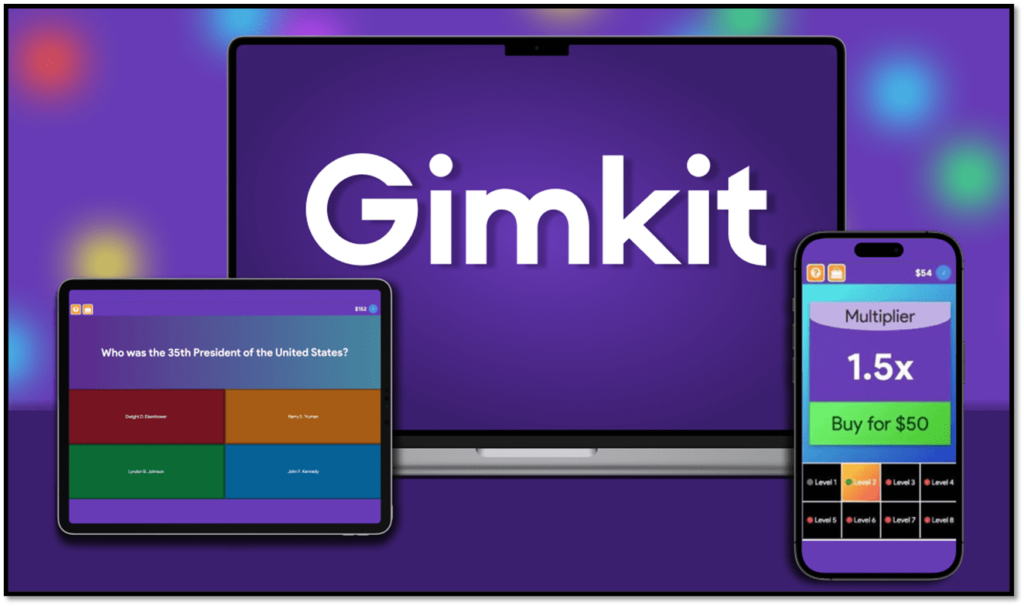

Gimkit is a game-based learning platform that resembles a game-show design like Kahoot. Students compete on their digital devices by answering various content related questions created by their teacher. With Gimkit students earn virtual currency rather than points which can be used as an investment toward increasing their game score (Powers, 2021). Students can engage in live play, or teachers can assign games as independent practice to enhance student learning (Powers, 2021).
Teachers will find that Gimkit is easy to navigate and set up no matter the content focus, and it even offers multiple choice or response-based questions. When setting up questions, teachers can include a voice over for question stems to scaffold the learning process for their students. Teachers can also determine how many questions to include, they can edit at any time, and they can practice using the game before sharing it with students and peers.
Students must utilize game codes or classroom accounts to access Gimkit. A high motivational factor for students is they enjoy the opportunity for team collaboration and competition against each other for Gimkit game currency (Powers, 2021). Gimkit has also added the student-led KidCollab mode, which allows students to construct their own game by adding questions before competing (Powers, 2021). Teachers can also monitor student progress by downloading a detailed student report after each game (Powers, 2021).
Gimkit Highlights:
- Gamified quizzes
- Live Gimkits
- Asynchronous Gimkits
- Multiple games
- Audio Feature
- Interactive and engaging
- Compatible with digital devices, iPhones, and Androids
- KidCollab student centered game builder
- Teachers can download student reports.
Cost: Free; Paid subscriptions starts at 59.88 USD (monthly)
Lexia
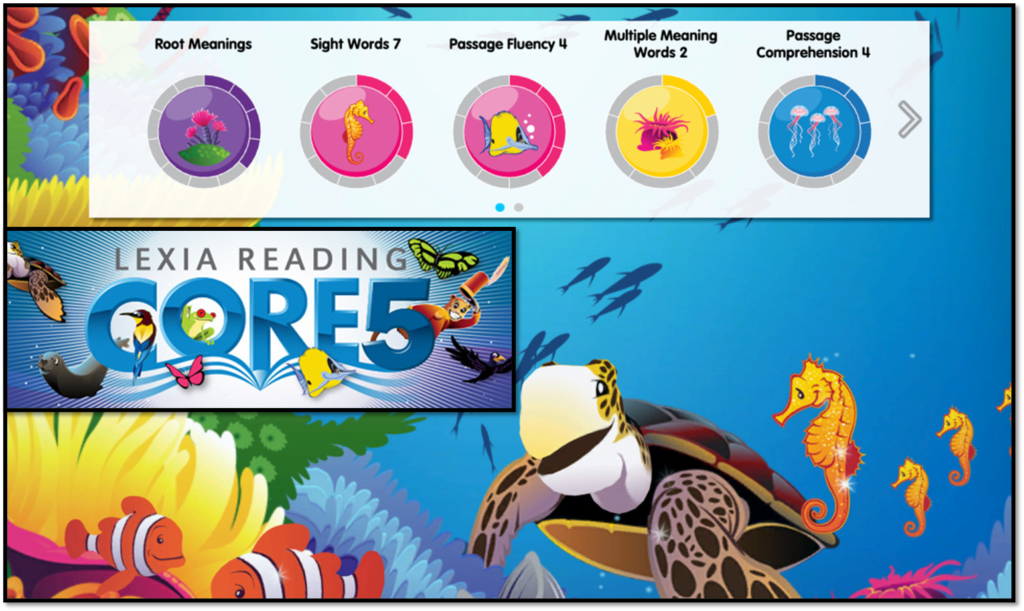

Lexia Core 5 is an elementary literacy-based digital platform designed to build foundational reading skills for students. Lexia is an immersive computer adaptive platform with a three-part balanced, comprehensive, and blended model approach, which focuses on phonological awareness, fluency, vocabulary, comprehension, and structural analysis (Beltran, 2022). Teachers can monitor students’ targeted needs as students work their way through the various unit levels. Students get to choose which area to work in, monitor their own progress, and they earn certificates as they complete various levels. Parents can also monitor student progress, which builds the school-home connection.
Lexia offers a variety of data graphics that teachers can utilize to monitor student progress. Teachers can visit the dashboard and view their class to determine students’ usage time, movement through units, grade level equivalency, skill progression, and areas of concern (Beltran, 2022). Teachers can also use additional resources called Skill Builders to extend and scaffold student learning based on targeted needs (Beltran, 2022). Lexia offers a resource hub, which has loads of literacy activities to support students with phonics, fluency, vocabulary, comprehension, grammar, and writing skills (Beltran, 2022). The colorful destination themes and interactive learning games increases student engagement and motivation.
Lexia Highlights:
- Gamified quizzes
- Live Lexia games
- Asynchronous usage
- Multiple games
- Audible feature
- Interactive and immersive
- Compatible with digital devices, iPhones, and Androids
- Student centered activity choices
- Resource Hub
- Teachers can download student reports.
- Activities (printed or assigned digitally)
- Decodable books (print or digital)
- Lesson slide decks compatible with Google Drive
- Professional learning resources (videos & interactive courses)
Cost: District or Organization Paid subscriptions; Lexia does not publish pricing details.
Switchzoo


I first discovered Switchzoo, during the COVID-19 pandemic. I was looking for an activity to engage my 4th and 5th grade intervention students for a remote learning lesson. Once I shared the Switchzoo platform with my students, they were excited and eager to learn especially when I invited them to create their own animal species using the Swithzoo Online feature. Switchzoo is a digital platform that features six online animal games; it is easy to navigate, and it allows students to manipulate and morph animals into their very own species in a fun and creative way (Polly, n.d.). Students can also play various animal-based games, solve puzzles, and learn about animal biomes at home or at school. Though Switchzoo has a science focus, more specifically animals, teachers can use this learning platform to integrate reading, writing, and research lessons and student-centered projects.
This student-centered platform is highly immersive, and the colorful graphics motivate learners to engage in activities independently. Switchzoo is suitable for upper elementary (grades 3-5). Some of the activities indicate that Switchzoo is appropriate for students who are 9 years and older (Polly, n.d.); it is beneficial for independent readers, students collaborating with parents, or during a teacher-led whole group or small group lessons. Switchzoo is also a great platform for advanced learners who enjoy reading, exploring, and learning about a variety of animals, animal adaptations, and biomes.
Switchzoo provides an Animal Profiles tab that takes users to an extensive list with links to various animals. Students and teachers will find that the list of over 140 animals is a great resource to use for animal research projects (Polly, n.d.). Teachers can also project information about selected animals and share information with students in a whole group lesson. Another feature on Switchzoo is called Build-a-Biome. Students can use the Build-a-Biome section and choose to build a 1) tundra, 2) taiga, 3) deciduous forest, 4) tropical rain forest 5) grass savannah or 6) desert (Polly, n.d.). This feature provides information about the biome, images of various biome features, and if students choose the wrong biome features, it will indicate that it is incorrect.
Additional features are 1) Words of a Feather used to feature information about various birds with links to extend learning, 2) Where Do I Live? used to identify where featured birds, mammals, reptiles, amphibians, and fish live using a map of the world, 3) Please Do Feed the Animals features a sort based on the types of food animals eat (Polly, n.d.). The Switchzoo platform can be used as a formative assessment as well as a review of concepts previously taught. Switchzoo was chosen by Parenting Magazine as one of the Best Computer Games for its highly immersive and engaging features, entertaining graphics, and its information about a vast array of animals (Polly, n.d.).
Switchzoo Highlights:
- Live Switchzoo activities
- Asynchronous usage
- Multiple activities
- Interactive and immersive
- Compatible with digital devices, iPhones, and Androids
- Student centered activity choices
- Lesson plans written by teachers.
- Resources
Cost: Free


Gimkit: A Game-based Interactive Asset
Of the three digital based platforms that I reviewed, I decided to use Gimkit to create two game-based interactive assets. Students will use the game-based learning activities as a fun learning tool aligned with literacy concepts. I decided to create a game for primary grades (K – 2nd) and a game for intermediate grades (3rd – 5th). It is highly recommended that teachers practice and review the games in advance to determine which group of students will benefit the most from each game-based activity. According to Huseman (2023), the lack of understanding of game concepts causes issues with learner engagement. Oftentimes teachers have a diverse group of students with a range of learning abilities and differentiation is required. Whichever activity teachers decide to use, it is best to examine the Gimkit game, determine usability for their learners, and model proper usage as teachers structure lessons and target student support.
The first Gimkit activity that I developed for students in primary grades is Rhyming with CVC Words (K-2). Students often need more practice with rhyming sounds in words. As students apply words that rhyme within sentences, fiction and non-fiction texts and poems, hearing the discrete sound patterns and distinguishing the correct sounds can be a complex skill set for early learners to explicitly hear and match. The Rhyming with CVC Words Gimkit game will provide a stress-free opportunity for primary elementary students to engage in hearing and learning rhyming patterns in words. The Gimkit game includes 20 multiple choice questions for students to practice. Students in Kinder and 1st grade may require scaffolded support depending on their academic needs; however high performing kinder and 1st grade as well as 2nd grade students may be able to use the Gimkit game independently.
For the intermediate elementary learners, I used Gimkit to developed an Inferencing/Drawing Conclusions 3-5 game which includes ten questions. Inferencing/drawing conclusions is an abstract concept whereby students engage in a higher level of thinking, which goes beyond literal thinking. Inferencing/drawing conclusions requires students to 1) use their own background knowledge about a topic, 2) read and decipher contextual cues not stated by the author, and 3) predict and determine their understanding of discrete themes based on the evidence within the text. Game-based learning activities can ease the load by taking away the stress and helping them to navigate the process in a fun way (Nguyen, 2021; Waterford.org, 2019). The more students practice making inferences, the more likely they will build their capacity to process texts inferentially as they predict and draw conclusions. Research indicates that students who participate in game-based learning experience an increased attention span, build active learning skills, and have an increased motivation to learn concepts (Waterford.org, 2019). The game-based learning activities created using Gimkit are sure to positively impact student learning outcomes.
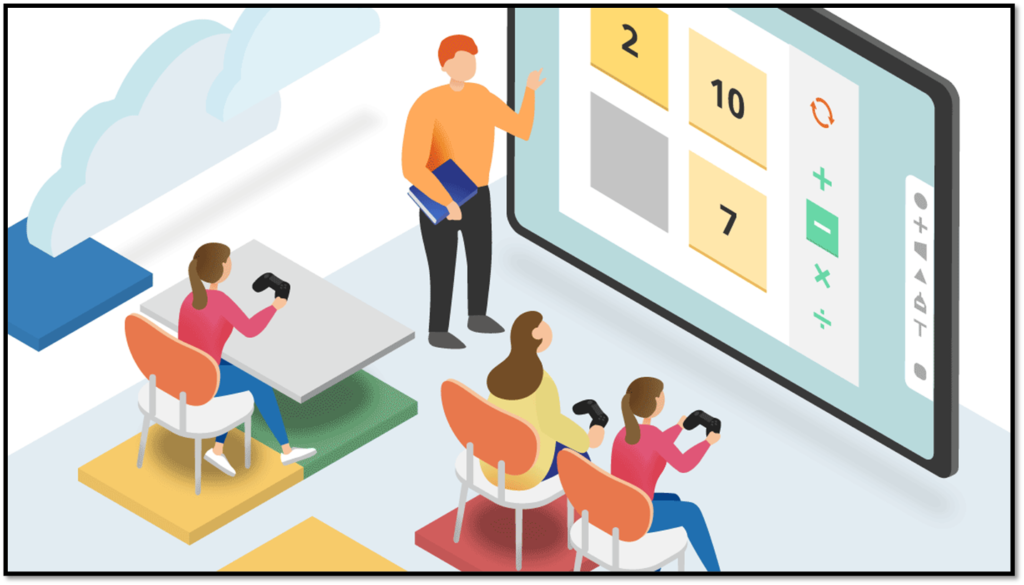

Efficacious Teaching Provides Interactive Learning Opportunities
It is imperative that the classroom environment is one in which students are engaged, motivated, and eager to learn daily. Teachers set the tone for what students encounter as they learn new concepts and build upon what they know. Digital learning tools at best provide digital strategies that allow students to learn concepts inside and outside of the classroom (Schrum & Sumerfield, 2018). Gamification presents an opportunity to supplement and not replace lessons that teachers plan. According to Square Panda India (2022) “Gamified learning is not just about adding points and badges. It’s about creating a framework around the learning experience that incentivizes students to persist with their effort and complete their goals.”
When teachers create structured learning opportunities utilizing game-based learning tools and platforms, it improves and increases student participation as teachers target and scaffold difficulty levels for their learners (Nguyen, 2021). Disrupting traditional learning approaches and providing alternatives helps a range of students from those with learning challenges to students who need to be challenged to succeed.
While game based-learning tools and platforms have proven beneficial, it can never replace efficacious teachers, intentional planning, or quality instruction that is aligned to learning standards (Nguyen, 2021). With game-based learning, teachers must plan, set goals, and prepare for student usage. Bordia (2022) states, “kids learn best when they have objectives, targets, and accomplishments to strive for while maintaining a sense of enjoyment.” In addition, a great benefit of game-based learning is the opportunity to collect data and use it to drive instructional decisions. When gamifying lessons with game-based learning activities, teachers must be careful to follow up, reflect, and provide student feedback. Although game-based learning offers a myriad of learning benefits for students, we must remember that a teacher’s presence, care, guidance, expertise, and reflective feedback can never be replaced by digital games.
Alkhaldi, N. (2020). Evolution of education: How interactive technologies reshaped learning.
eLearning Industry. https://elearningindustry.com/evolution-of-education-how-interactive-technologies-reshaped-learning
Beltran, A. (2022). Lexia core 5 reading: Blended reading program offers individualized growth. https://www.commonsense.org/education/reviews/lexia-core5-reading
Bordia, D. (2022). Gamification as a teaching tool. Teachmint. Retrieved January 20, 2024, from https://blog.teachmint.com/gamification-as-a-teaching-tool/
Huseman, T. (2023). Challenges of gamification in education. Acadecraft. Retrieved January 20, 2024, from https://www.acadecraft.com/blog/gamification-education-challenges/
Nguyen, H. (2021). How to use gameplay to enhance classroom learning. Edutopia K-12. https://www.edutopia.org/article/how-use-gameplay-enhance-classroom-learning
Polly, J. A. (n.d.). Switchzoo: Outstanding interactivity with an animal theme. Commonsense Education. https://www.commonsensemedia.org/website-reviews/switchzoo
Powers, M. (2021). Gimkit: Group game show-fun and independent study in one engaging tool. Commonsense Education. https://www.commonsense.org/education/reviews/gimkit
Schrum, L. & Sumerfield, S (2018). Learning supercharged: Digital age strategies and insights from the edtech frontier. Portland, OR: International Society for Technology in Education.
Square Panda India (2022). The importance of gamification in education. Medium. Retrieved January 20, 2024, from https://squarepandaindia.medium.com/the-importance-of-gamification-in-education-cfa5f9a0c75e
Waterford.org (2019). How to use gamification in your classroom to encourage intrinsic motivation. Waterford.org. Retrieved January 20, 2024, from https://www.waterford.org/education/gamification-in-the-classroom/